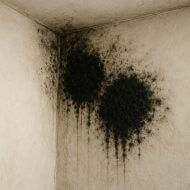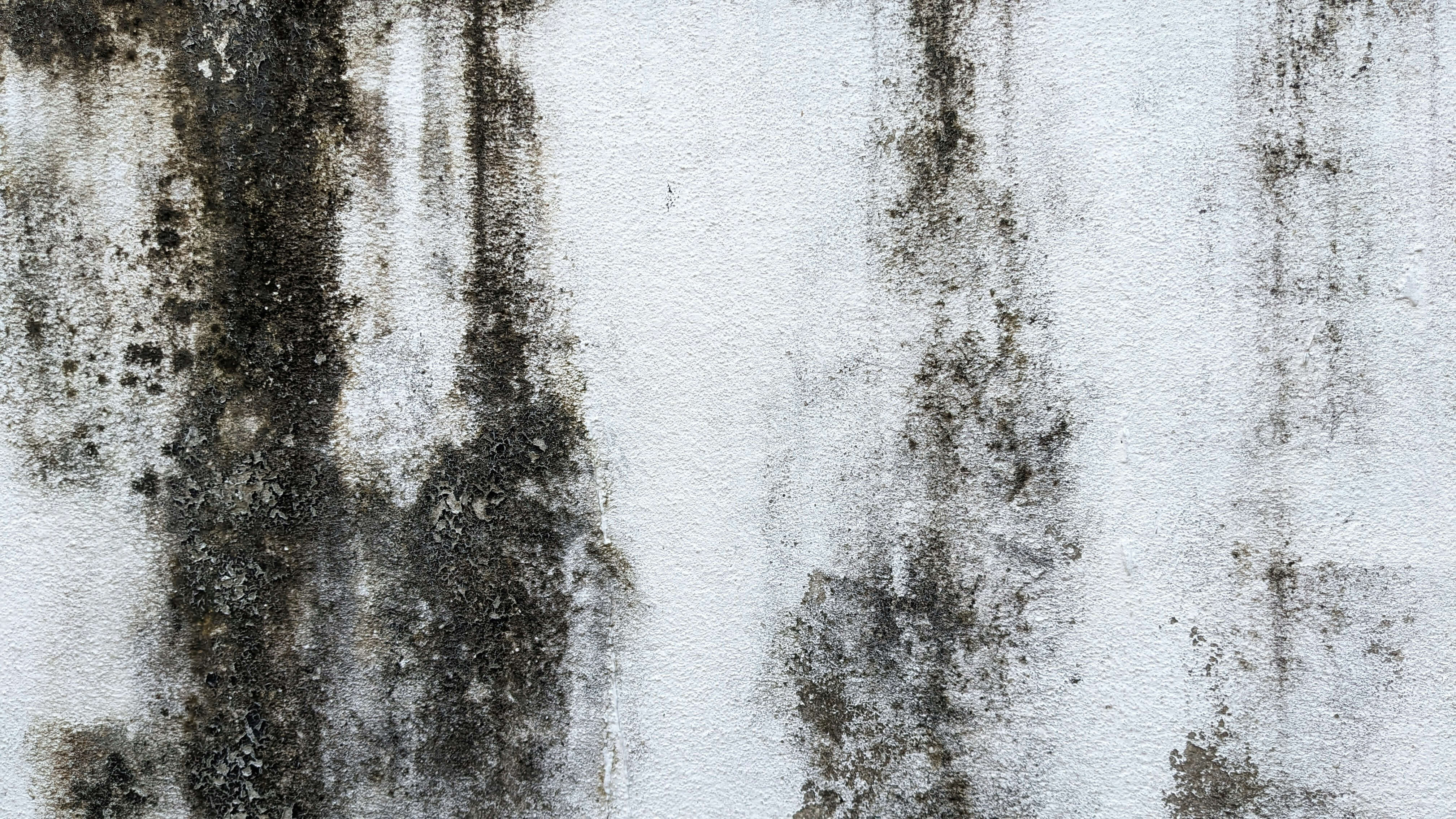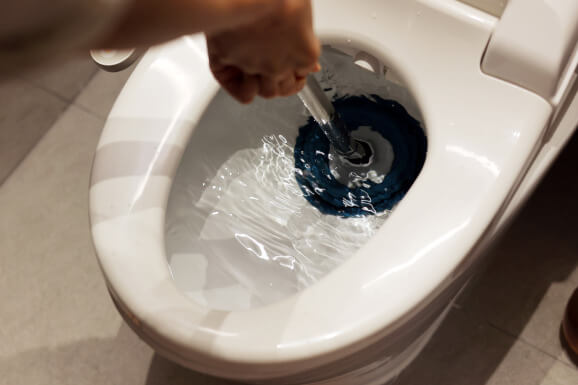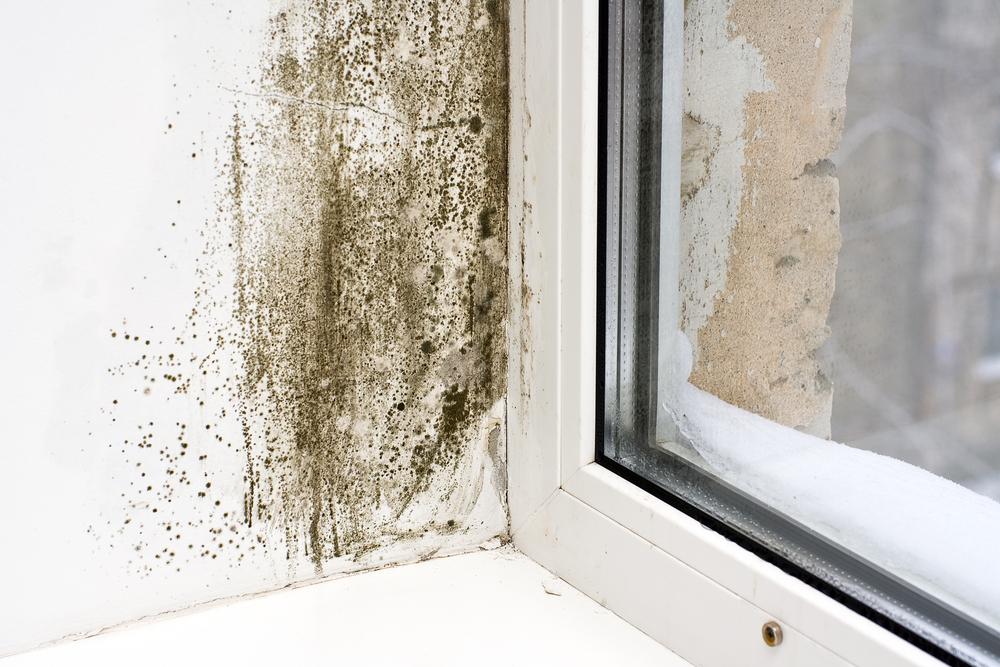Are you doing a restoration project?
Modernize can pair you with three to four pros in your area, so you can compare options and save time and money.
What You Should Know About Black Mold
Mold inside your home can negatively affect your health and indoor air quality. While not all mold types are equally dangerous, every variety poses some risk if left untreated. Black mold, in particular, is both the most harmful and the most difficult to treat. We’ll break down the differences between black mold and other common types of household mold so you’ll know what you’re dealing with and how best to respond.
What Is Black Mold?
Toxic black mold, or Stachybotrys chartarum, is a dark green or black fungus that thrives in damp or humid environments. While people often refer to “black mold” as a single type, there are actually multiple varieties. Some are toxic, but some aren’t.

Black mold releases airborne spores called mycotoxins. They can spread through your home, where your family can inhale them. Breathing these spores may trigger allergy-like symptoms such as coughing, sneezing, irritated eyes, or skin rashes. Prolonged exposure, particularly for individuals with asthma or compromised immune systems, can lead to more severe respiratory problems or illness.
You’ll typically find toxic black mold in chronically damp areas like basements, attics, or inside walls where insulation and drywall have absorbed moisture. Non-toxic black mold, on the other hand, can appear in a wider range of household areas but is still important to remove promptly.
Common Types of Household Mold
Not every mold infestation involves black mold. In fact, other mold varieties are more likely to appear in the average home. Here are some of the most common:
- Aspergillus: This powdery mold often shows up in dust, air conditioning systems, or on food. Most strains are low in toxicity, but some can trigger allergies, respiratory irritation, or serious infections in people with weakened immune systems. Colors vary widely, from white to green to yellow.
- Cladosporium: Typically dark green or brown, this mold grows on fabrics, carpets, wood, or HVAC ducts. It thrives in both warm and cool areas and is known for causing allergy-like symptoms such as sneezing, watery eyes, and skin irritation.
- Penicillium: Blue or green in color, this mold spreads rapidly across water-damaged materials like insulation, mattresses, or wallpaper. While certain strains are used in medicine, household Penicillium can trigger allergies and produce musty odors.
- Mildew: Technically a type of mold, mildew forms flat, patchy growths on surfaces like shower walls, windowsills, and tiles. Usually white, gray, or yellow, it’s easier to clean than other molds but can still cause breathing issues if ignored.
Although these molds are generally less hazardous than toxic black mold, all of them can reduce indoor air quality and aggravate health conditions.
Key Differences: Black Mold vs. Other Mold Types
Black mold is easy to recognize by its slimy texture and dark green or black coloring. Unlike other molds that can thrive after temporary water damage, black mold typically requires ongoing moisture to grow.
Find the Right Contractor for Your restoration Project
Whether you’re ready to begin your project now or need some expert advice, our network of contractors are here to help. With a few simple questions, we’ll find the best local professionals for you
Health symptoms are another key distinction. Toxic black mold often begins with the same allergy-like reactions you’d get with other mold types, such as coughing or sneezing. However, it can escalate to rashes, headaches, or even nosebleeds. Other molds may cause similar symptoms, but usually in milder forms.
Spread rates also differ:
- Penicillium and Aspergillus: Spread quickly across carpets, wallpaper, and insulation, sometimes within 24 to 48 hours after water damage.
- Cladosporium: Steadily grows on organic surfaces in areas with poor airflow.
- Mildew: Usually surface-level but can spread across grout or tile if humidity remains high.
While many mold types spread faster than black mold, black mold is more toxic and more dangerous if disturbed.
How to Tell What Mold You Have
Identifying mold type by sight alone can be tricky, but a few clues help:
- Color and Texture: Black mold is slimy and dark, while mildew is flat and lighter in color.
- Location: Black mold favors long-term damp spots like basements, attics, and behind walls.
- Odor: A strong, musty smell often signals black mold.
We recommend professional mold testing if you’re worried you might have black mold. DIY test kits can offer clues, but they don’t provide the same level of accuracy as a licensed remediation specialist.
Mold Removal and Prevention Tips
- For Non-Toxic Molds: Small areas of mildew or light mold can often be scrubbed away using detergent and water. Always wear gloves and a mask when cleaning.
- For Black Mold: Professional removal is essential, as disturbing toxic spores can worsen contamination and health risks.
- Prevention Tips: Fix leaks quickly, maintain proper ventilation, use dehumidifiers in damp spaces, and run exhaust fans in kitchens and bathrooms.
Conclusion
Not every mold problem is black mold, but all mold should be taken seriously. Early detection and controlling moisture are the keys to preventing mold growth and protecting your health. If you suspect black mold or find mold spreading beyond a small surface area, contact a licensed remediation specialist for safe and effective treatment.
Find the Right Contractor for Your restoration Project
Whether you’re ready to begin your project now or need some expert advice, our network of contractors are here to help. With a few simple questions, we’ll find the best local professionals for you
Reviews from Real Homeowners
Welcome to Homeowner Resources! We are the Modernize blog. Modernize pairs more than 3 million homeowners a year with pre-vetted contractors in their area. This blog started because we believe homeowners should know everything about their homes, from how their HVAC works to which front door colors they might love. On Homeowner Resources, you can find information on every part of your home, right down to how you can negotiate with contractors to get the best price. Here's more about the blog.
Need a contractor? Learn more about how Modernize finds the right pro for you.


